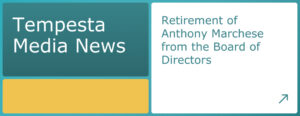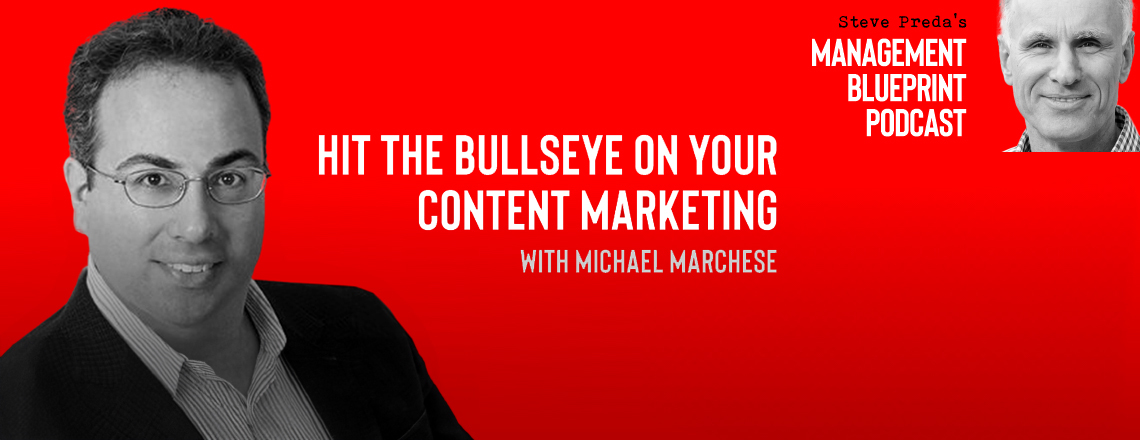Businesses can survive in a stagflationary environment by realigning their marketing strategy. This shift requires collaboration at the C-level and a conscious decision to prioritize owned media.
Marketing today can feel challenging. CMOs feel the pressure of high costs and shrinking profile margins, prompting a new approach.
In part one of our series on finding a path forward post-COVID, we discussed how the pandemic created new challenges for marketers.
In part two, we introduced a bullseye model to realign marketing goals in the context of a stagflationary environment.
Rethinking how you approach your marketing mix is only the first step. The next step is allocating resources to support a content marketing program that establishes a strong online presence by prioritizing owned media.
Here’s why collaboration at the C-level is crucial to achieving this goal.
Why branding vs. direct response is a problematic approach
Traditionally, marketing departments have tended to take a siloed approach and manage branding and direct response separately.
Branding encompasses all the activities that shape a company’s image. It can include messaging, logos, social and environmental programs, and more.
Branding creates value for a business, even though brand value can be difficult to measure. Some would argue it’s at the core of what a business does. When marketers are consistent with branding, it can foster trust and help build relationships with customers.
Most businesses keep branding separate from their direct response programs. Direct response marketing activities acquire new customers through offline and online campaigns.
Unlike branding, it’s easy to track the time and resources invested and ROI by looking at customer acquisition numbers or sales volumes.
This approach is problematic. Marketing today is increasingly digital, a trend that accelerated during COVID-19.
With digital channels playing a more important role, owned media has become a key asset. Owned media refers to the content a business develops to establish its online presence and share information with prospects. It can include blog posts, email series, branded videos, and SEO efforts.
Marketers can leverage owned media to generate awareness for the business, connect with leads, and nurture prospects by delivering information throughout the buying journey.
The branding vs. direct response model makes sense when a business primarily focuses on paid media. Paid ads play a very important role in online marketing spending and allow marketers to generate an immediate response.
However, investing in content creation efforts makes more sense in a stagflationary environment due to the higher ROI of owned media in the long term. Because this content shares elements of branding and direct response with lead generation, the branding vs. direct response approach becomes obsolete.

Managing owned media at the C-level
Owned media is an asset. It’s a strong foundation for your online presence and allows for scalable growth. It can even insulate your marketing department from budget cuts since you can keep using these assets to generate leads with little additional investment of time or resources needed.
Even though 2022 saw an increase in marketing budgets, with businesses spending 9.5% of their revenue on marketing on average, most organizations are spending less than they were before COVID-19.
Investing in building-owned media should be a priority. Everyone at the C-level has a role to play.
CEOs
CEOs can make a conscious decision to prioritize owned media. They can allocate resources to build and optimize this asset and support the work of the CMO. They can also have a significant influence on shaping a company culture that values communication and collaboration by working closely with executives from different departments.
CFOs
CFO buy-in is crucial for developing owned media. Under the traditional branding vs. direct response model, content marketing and SEO often get overlooked.
Many brands lump content marketing and SEO into the branding budget, which means CFOs don’t allocate enough resources to properly develop owned media.
Using the paid media budget to develop content and SEO doesn’t work either. The purpose of this budget is to generate an immediate return. Owned media supports long-term growth goals and needs its budget.
CMOs
As many as 60% of CMOs say they currently lack the resources needed to meet their marketing and customer experience goals.
Marketing today is evolving at a rapid pace. CMOs need to play a more important role at the C-level by educating other decision-makers about the latest trends and advocating for a strategy that prioritizes owned media.
Adopting a new model
Historically, companies that reallocate spending experience growth. Collaboration at the C-level is crucial for realigning marketing spending and unlocking growth in our challenging environment.
CEOs, CFOs, and CMOs need to work together to create a new chart of accounts that reflects the need to emphasize digital marketing. This chart should include a budget for branding, direct response, and owned media.
Creating a separate budget for owned media has several advantages. It facilitates tracking spending and performance for owned media, which means CFOs can calculate ROI accurately.
Plus, CMOs can do a better job with clear goals and a dedicated budget. They can launch programs that make sense for the organization’s goals and resources and plan for the future if they have a predictable owned media budget.
And, with a clear budget allocated to owned media, it will become easier for CMOs to implement consistent strategies and keep developing content in the long term. It’s a crucial aspect of launching a successful owned media program since ROI increases as you keep developing this asset over time.

From budgeting to implementation
Adopting a digital-first approach can make businesses more resilient in a stagflationary environment, but it requires some changes at the C-level. Communicating, making collaborative decisions, and rethinking marketing spending will support long-term growth through owned media.
However, establishing a dedicated owned media budget is only the first step. To get the most out of this budget, businesses need to choose the right strategies for developing content that will yield results.
Managed services market trends reveal that a growing number of businesses choose to outsource this process. Working with a partner gives businesses access to expertise, additional resources, and measurable results.
With Bullseye Effect™, Tempesta Media offers a turnkey managed service solution for content creation, SEO, social media, email marketing, and more than 30 modules. After completing an in-depth review of your current marketing program with our Bullseye Effect assessment, we will develop a plan that is uniquely adapted to your needs. Our approach includes content development, continuous optimization of your owned media program, social sharing, influencer marketing, email marketing, SEO, and more.
Get in touch with us to learn more about this solution or take a look at part four in our series on finding a path forward post-COVID to get a better idea of what it truly takes to implement an owned media strategy and whether in-house teams can realistically manage it.











